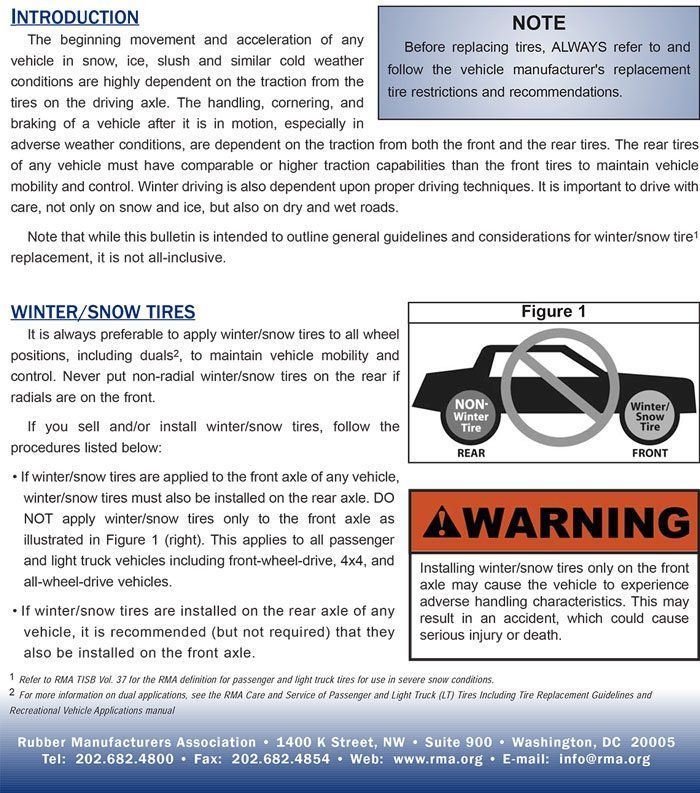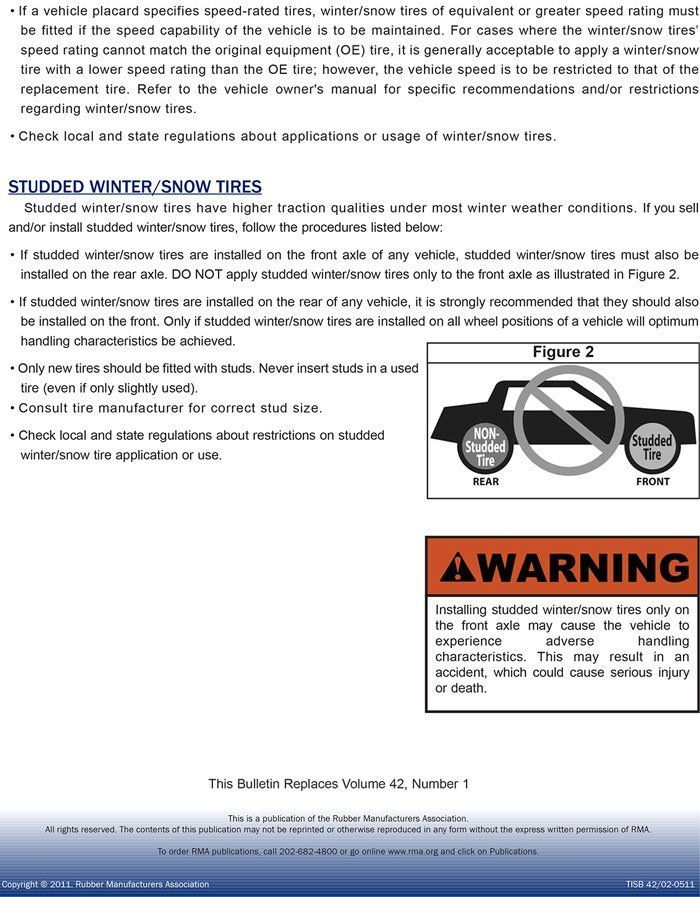Industry Best Practices - Tires
The Dunn Tire team has researched the best practices and manufacturer recommendations from the automotive industry. It is important to understand that the policies and procedures outlined below are not original to Dunn Tire. These processes are an automotive industry standard. Dunn Tire follows the recommendations and standards of the automotive industry to regulate company guidelines. Dunn Tire places strong emphasis on the safety of our customers and the performance of their vehicles.
MOUNTING TIRES
AWD Vehicles
- All tire positions on an AWD vehicle must have the same brand name, model, tire tread pattern and performance rating.
- All tire positions on an AWD vehicle must be within 4/32nds of tread depth to one another.
4 Wheel Drive Vehicles
- All tire positions on a 4WD vehicle must have the same brand name, model, tire tread pattern and performance rating.
- All tire positions on a 4WD vehicle must be within 50% of tread depth to one another.
- Example: If a new tire originates with 12/32nds of tread, the existing tires mounted on all other positions of the vehicle must be at 6/32nds or higher in tread depth.
- Tires originating with higher tread depths have a larger window of replacement opportunity than those with lower tread depths.
Winter Tire Application: All Vehicles
- Four winter tires must be installed on a vehicle regardless of the drive axle of the vehicle.
- Tires must match category on all axles. (*Exception to this is AWD/4WD vehicles. Please follow the AWD and 4WD standards listed above when installing winter tires.)
- Example of category: Ice compound, traditional compound, directional tires, etc.
- Tires with the highest amount of tread depth will be installed on the rear.
- Tire performance ratings must match.
OWNER'S MANUALS & TECHNICAL BULLETINS
Nitto Tires technical bulletin:
Attention! – Matching Tires on Four-Wheel Drive and All Wheel Drive Vehicles:
4WD and AWD vehicles require special attention to insure that all four tires are closely matched in diameter to avoid strain and possible damage to the vehicle's differentials and/or viscous couplings. Tire inflation pressure also affects the tire's rolling circumference and should be matched according to the vehicle manufacturer's recommendations. Always check the vehicle manufacturer's recommendations prior to installing new tires.
Cooper Tire Service Bulletin no. 113
(Excerpt) IMPORTANT
In some cases, the vehicle manufacturer may specifically advise against replacing less than all four tires. Always check and follow the recommendations in the vehicle owner's manual. For 4WD and AWD vehicles, even small differences in outside diameter may cause drive-train damage or mechanical malfunction.
Subaru FAQ's:
Do I have to replace all four tires on my AWD Subaru?
All of the tires on your AWD Subaru must be within 1/4 of an inch of rolling circumference (part that touches the road). This is because of our All Wheel Drive System. See page excerpt for a 2010 Subaru Forester owner's manual here. You can look up your specific Subaru owners manual here.
Proper rotation of the tires at the appropriate service intervals will increase the life expectancy of your tires. This will also ensure that all four tires stay relatively equal in their tire tread wear. When vehicles are serviced, tires should be routinely checked to ensure that the alignment and tires are in good working condition.
Ford Fuzion.net
Depending on the Tread on the other tires you may need to replace all 4 tires. You can only have about a 3/32 tread difference between tires on any AWD or 4×4. The reason is with the different tread depth the tires will rotate at different rates and put un-wanted stress on the AWD drive train that can cause damage to it.
Not sure if your auto is AWD or 4WD? Check your owner's manual and read up here on the differences.



